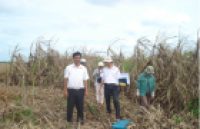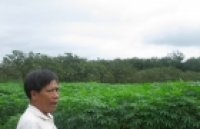| Bioengineered Bacteria to Produce Electricity from Wastewater |
|
Researchers from École Polytechnique Fédérale de Lausanne (EPFL) in Switzerland successfully engineered Escherichia coli (E. coli) bacteria to generate electricity from wastewater through extracellular electron transfer (EET). In this process, the bioengineered bacteria produces electricity by metabolizing a variety of organic substrates. E. coli is a type of bacteria that is commonly found in the intestines of humans and animals. |
|
Researchers from École Polytechnique Fédérale de Lausanne (EPFL) in Switzerland successfully engineered Escherichia coli (E. coli) bacteria to generate electricity from wastewater through extracellular electron transfer (EET). In this process, the bioengineered bacteria produces electricity by metabolizing a variety of organic substrates.
E. coli is a type of bacteria that is commonly found in the intestines of humans and animals. It grows in a wide range of environments including wastewater. This paved the way for the researchers to study the bioengineered bacteria from wastewater in a local brewery in Lausanne, Switzerland.
To increase its ability to produce electricity, components from Shewanella oneidensis MR-1, a famous bacteria for generating electricity, were integrated to create a complete EET pathway consisting of the inner-membrane CymA, periplasmic small tetraheme cytochrome (STC), and outer-membrane Mtr complex. The findings of the study are a noteworthy success in bioelectric research that has not been achieved ever before.
Aside from waste management and energy production, these bioengineered bacteria have further implications in microbial fuel cells, electrosynthesis, and biosensing applications.
For more information, read the paid article from Joule. See https://www.isaaa.org/kc/cropbiotechupdate/article/default.asp?ID=20422 |
|
|
|
[ Tin tức liên quan ]___________________________________________________
|


 Curently online :
Curently online :
 Total visitors :
Total visitors :


